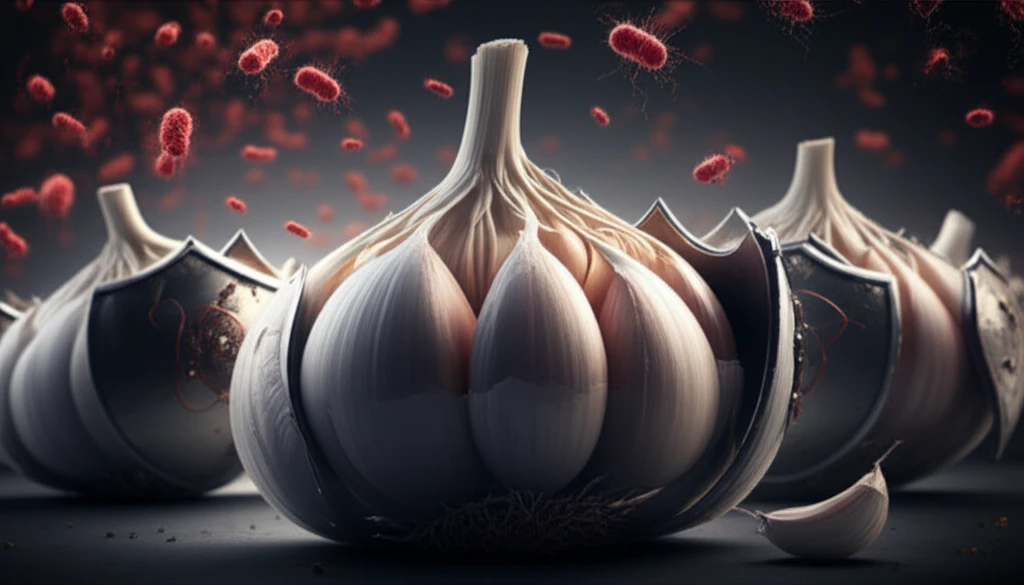
Garlic vs. Staph Infections: Can This Kitchen Staple Fight Superbugs?
"Uncover the potent antimicrobial properties of garlic and its potential in combating Staphylococcus aureus, including antibiotic-resistant strains, offering new hope in the fight against infectious diseases."
Staphylococcus aureus is a major cause of infectious diseases worldwide. This common bacterium, part of our natural microbiota, can cause opportunistic infections, especially when antibiotic resistance is involved. The rise of antibiotic-resistant strains highlights the urgent need for new antimicrobial strategies.
Natural products are increasingly recognized as valuable sources for innovative antimicrobial treatments. The Allium genus, which includes garlic, has been studied extensively for its medicinal properties. Garlic has a broad range of antibacterial and antiviral properties, making it a promising candidate in the fight against bacterial infections.
This article explores the antimicrobial activity of two garlic species, Allium sativum (common garlic) and Allium tuberosum (Chinese chive), against staphylococcal infections. The research investigates their effectiveness, offering new insights into natural alternatives to traditional antibiotics.
Does Garlic Have the Power to Combat Staph Infections?

A study published in the journal Advanced Pharmaceutical Bulletin investigated the effects of Allium sativum (Asa) and Allium tuberosum (Atu) extracts against Staphylococcus aureus, including methicillin-resistant strains (MRSA). The study induced staphylococcal infections in rats to observe how these garlic extracts and amoxicillin, a common antibiotic, affected the infection.
- Control groups received a saline solution.
- Groups treated with either 100 mg/kg or 400 mg/kg of A. sativum extract.
- Groups treated with either 100 mg/kg or 400 mg/kg of A. tuberosum extract.
- A group treated with amoxicillin (50 mg/kg) for PSSA infection.
- Additional groups for MRSA infection included A. sativum (400 mg/kg) alone, amoxicillin alone, and a combination of both.
The Verdict: Garlic as a Natural Ally?
The study found that A. sativum and A. tuberosum were effective in reducing PSSA infection, but neither showed significant effects against MRSA. Specifically, amoxicillin, A. tuberosum (400 mg/kg), and A. sativum (400 mg/kg) decreased PSSA counts at all-time points, suggesting a potential therapeutic effect.
Chemical analysis of the garlic extracts revealed distinct compositions, with A. sativum showing a higher concentration of sulfur compounds, known for their antimicrobial properties. This difference in chemical composition may explain the varying effectiveness against different bacterial strains.
While these findings are promising, further research is needed to fully understand the mechanisms and optimize the use of garlic extracts in combating staphylococcal infections, particularly MRSA. The study highlights the potential of natural products like garlic as valuable sources for novel antimicrobial agents, especially in the face of increasing antibiotic resistance.
